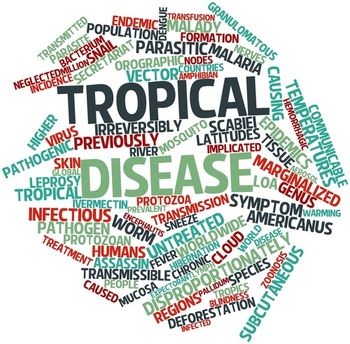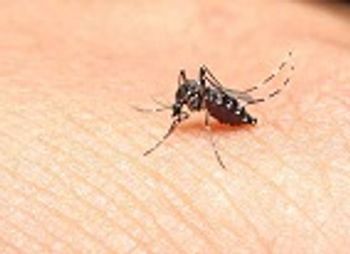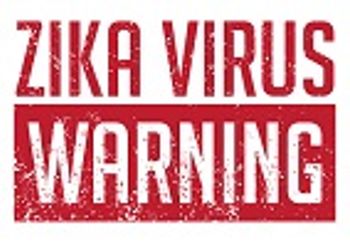
The World Health Organization (WHO) recently appointed its first African Director-General during general assembly, amidst controversy over travel expenditures.

The World Health Organization (WHO) recently appointed its first African Director-General during general assembly, amidst controversy over travel expenditures.

In a Phase 2 controlled clinical study, patients with Clostridium difficile infection receiving ridinilazole were found to have achieved better treatment outcomes than those receiving vancomycin.

Recent findings on the prevalence of Chagas disease in California are in line with 2009 estimates from the Centers for Disease Control and Prevention.

This week’s Public Health News Watch focuses on news that the new American Healthcare Act (AHCA), recently approved by the House, reportedly will not cover those with preexisting conditions.

Two studies published in the Centers for Disease Control and Prevention's Emerging Infectious Diseases journal have outlined just how local and travel-related Zika cases differ, as well as which testing method is most sensitive to Zika virus RNA.

The New England Journal of Medicine recently published two pieces on yellow fever. The first reports on the situation in the Americas, while the second recounts the case of a man from Angola who was found to be coinfected with yellow fever and Japanese encephalitis virus, although he reported no history of travel.

In a case study published in Science Translational Medicine, researchers describe what they believe is the host response to the blood-borne disease that has plagued several countries in Africa and caused world-wide panic.

In late February, the World Health Organization (WHO) released its first list of Priority Pathogens, for which research and development is strongly needed. Not included on the list is tuberculosis, which has been acknowledged as one of the leading killers around the world. Naturally, many individuals working in public health and infectious disease are objecting to the exclusion.

Researchers from the Julius Center for Health Sciences and Primary Care at the University Medical Center in Utrecht, The Netherlands, examine the cost-effectiveness of the most commonly used treatments for community-acquired pneumonia.

As concerns over the spread of tropical infectious diseases increase, in the age of Zika virus and Dengue fever in particular, PRVs may have significant implications for the development of novel vaccines and antivirals, assuming the program is used effectively.

Their commentary effectively represents a position statement for the ASTMH, with the leaders/authors pledging to continue working with political leaders and “global health stakeholders in support of evidence-based policies and programs” designed to ensure public health in the United States and abroad.

Researchers have found that it is possible to bolster the immunity of the Aedes aegypti mosquito, the species that transmits Dengue, Zika, and Chikungunya, against these viruses and effectively suppress its ability to transmit the disease.

According to their research, the model can be manipulated to recreate the process of immune-cell response and reproduce the function of the lymph nodes in immune cell activation.

On December 14, the Centers for Disease Control and Prevention (CDC) issued a Zika-related travel and testing guidance for Brownsville, Texas and the surrounding area after local officials confirmed 5 cases of the virus linked to local mosquitoes.

The authors may have also discovered a potential therapeutic target for the complication.

A new epidemiological study has mapped the incidence of imported malaria cases globally and provided context for the disease burden in places where the virus is not endemic.

In response to the hepatitis C virus outbreak in Kentucky, political and healthcare officials are debating the implementation of a needle exchange program for injection drug users.

A new study’s findings make researchers optimistic as it proves that prolonged storage and pasteurization effectively inactivated Zika in the breast milk taken from women infected with the virus.

A new study explores the role that climate change has in the emergence of vector-borne diseases such as Dengue fever, Chikungunya, and Zika virus.

A recent analysis by the Centers for Disease Control and Prevention found that strides have been made in the fight against measles; however, the work still falls short of goals set by the World Health Assembly (WHA).

A new potential case of the Ebola virus has been reported in Canada.

A recent study finds that when it comes to mosquito-borne outbreaks, in this case, Chikungunya, infections originate around the home with women more likely to become infected than men.

The growing number of HIV cases in Russia suggests that global eradication of the virus may not happen by 2030.

Researchers have noted four other features unusual for babies born with congenital infections due to Zika virus infection.

The nation’s top public health officials believes the disease is destined to spread across the United States in the coming months.

A new Zika virus case cluster has emerged in Miami, according to the Florida Department of Health.

Zika’s history as a “tropical” disease plays into the theory that global warming has played a role in the presence of virus-carrying Aedes Aegypti and Aedes Albopictus mosquitoes, and thus the disease itself, in heretofore “temperate” climates such as the southeastern United States.

The mainstream media has put the Florida Department of Public Health (DOH) on the defensive over Zika.

Collateral damage from the ongoing opioid abuse epidemic in the United States continues to plague many rural communities across the country, with recent reports suggesting it is likely behind clusters of HIV cases in these areas.